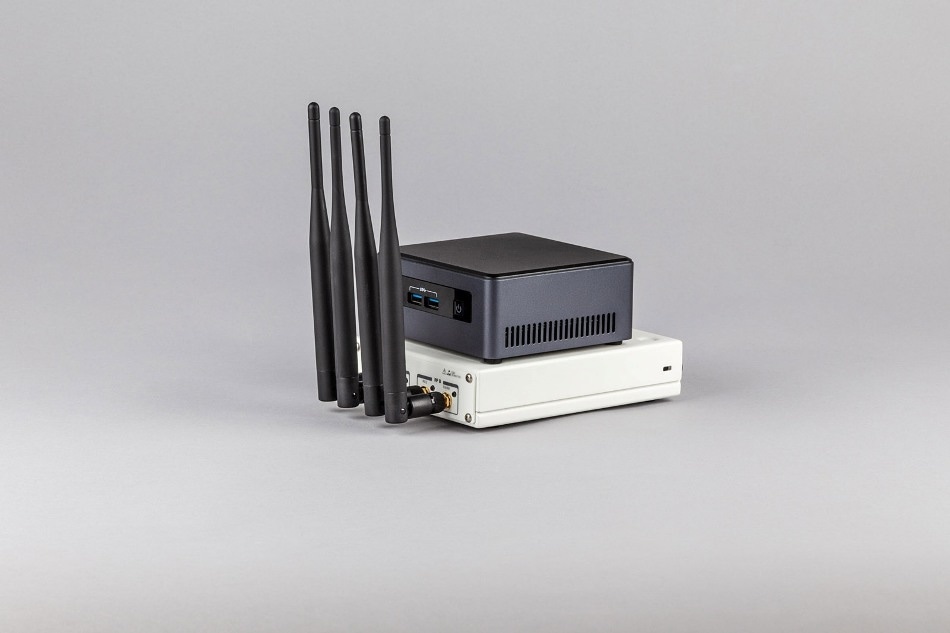Feb 4 2019
Someday, cars will exchange data through radio and caution each other about hindrances and accidents. Presently, a range of radio standards is in existence to enable this. However, it is nearly impracticable to compare them since the necessary hardware has not yet hit the market.
 Software-based wireless solution for Car2X communication from Fraunhofer HHI. (Image credit: Fraunhofer HHI)
Software-based wireless solution for Car2X communication from Fraunhofer HHI. (Image credit: Fraunhofer HHI)
In order to deal with this dearth, scientists at the Fraunhofer Institute for Telecommunications, Heinrich Hertz Institute, HHI have designed a software system that will allow users to examine the future wireless technology. This is a perfect solution for manufacturers to test intriguing radio applications at an early stage.
The automobile is gradually but surely developing into the autonomous vehicle since new functions are incorporated with each new generation. Already, proximity radars are nearly a standard. Moreover, even mid-range vehicles are being equipped with steering control systems that keep cars in lane in case the driver is being careless or falls unconscious. However, the future autonomous driving will reach far beyond, with automatic communication between cars.
Cars will be able to caution each other through radio about things such as accidents that lie around a turn. Moreover, ambulances that are nearing a junction will notify other drivers before the flashing blue light is visible. Furthermore, this scenario is not too far since the necessary technology is slowly entering the market. This modernization will see cars which can communicate with each other as well as have receiver stations beside the road. Hence the name vehicle-to-X communication, which means communication between cars and different receivers.
Wireless Technologies for Vehicle Communication
In the communications technology division, presently, two highly potential radio technologies for vehicle communication are being talked about. The WLAN standard 802.11p is one of the technologies. This technology has developed to the point where it can be attached to vehicles in the form of special WLAN chips. Initial WLAN field tests have already been conducted with it. The second technology is known as LTE-V2X-Sidelink, which has two different communication channels: one that employs a direct communication route just like WLAN and a second one that uses a regular mobile communications interface. In addition to enabling direct communication with vehicles in their near proximity, this system also enables the cars to exchange data through mobile radio; for instance, it can download information about the wider traffic condition. Unlike with the WLAN standard 802.11p, no chips are available on the market for LTE-V2X-Sidelink so far. This is a hurdle for developers of communications technology and car manufacturers since they need to test at the earliest how the two standards 802.11p and LTE-V2X-Sidelink behave practically. Hence, comparative analyses are not possible currently.
Radio Technology Retrofitted in Software
Researchers at Fraunhofer HHI in Berlin have now discovered a solution to solve this problem. They have designed a test system that enables comparison of the two technologies, although LTE-V2X-Sidelink components are not yet available.
We don’t use any special radio hardware, rather we fully retrofitted the radio technology into software.
Jens Pilz, Project Manager, Fraunhofer HHI.
This can be pictured as a virtual music keyboard on a computer screen and notes can be played without requiring an instrument. “All functionalities, all data processing levels that are normally found on the chip—we’ve represented them all as algorithms,” says Jens Pilz. “This puts us in a position where we can compare the technologies directly.” Jens Pilz and his team are able to couple the software in the laboratory as well as directly with a vehicle and connect the computer to the on-board antenna. This enables testing of the technology on the road. Presently, an industrial data format in compliance with the ETSI-ITS standard is used to process data such as position and speed in vehicles. Since the Fraunhofer HHI software has the ability to read vehicle data in the ETSI-ITS format, it can be incorporated easily into any modern vehicle.
Test Platform Will Support 5G Mobile Wireless Standard
Consequently, we can offer manufacturers our system as a test platform. Without having to install hardware, they can use it to test and compare applications based on the 802.11p or LTE-V2X-Sidelink standard. This enables them to test technologies before the LTE-V2X-Sidelink chips are even on the market.
Jens Pilz, Project Manager, Fraunhofer HHI.
The researcher underscores that the software will also master the new 5G mobile wireless standard, which will hit the market in the next few years. “This standard is currently undergoing international consultation and there are scarcely any hardware solutions to date. Accordingly, we’re offering a very early opportunity to try out ideas for future 5G applications.” Parties who are interested can experience how the software from Fraunhofer HHI works at the world’s largest exhibition for the mobile industry, the Mobile World Congress, in Barcelona from February 25th to 28th, 2019. The experts from Fraunhofer HHI will present their system at Hall 7, Booth G31.